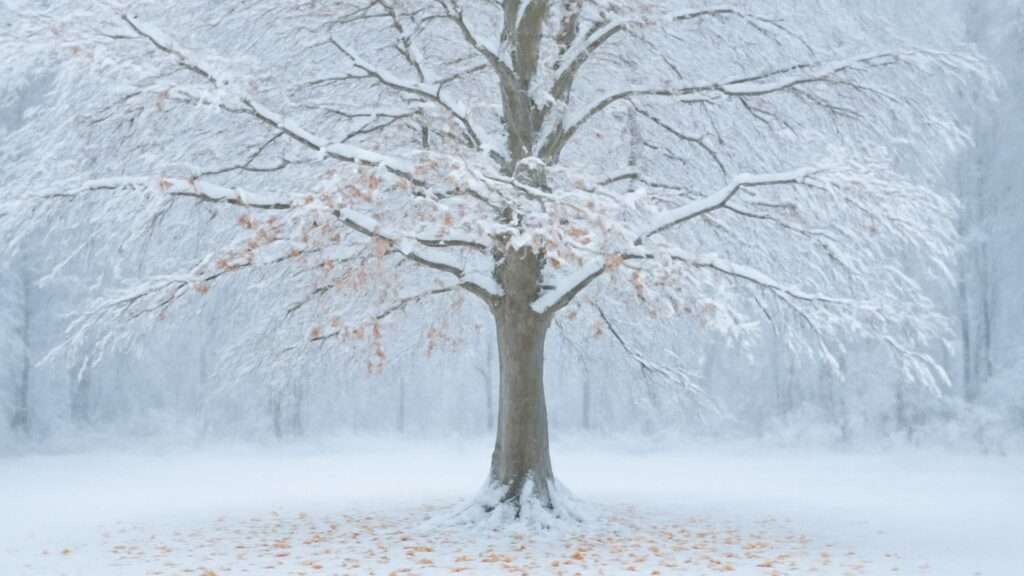
Beech Tree Winter Care: Essential Tips for Protecting Your Tree in Cold Weather
As winter sets in, many gardeners worry about how the cold weather will affect their beech tree. 
In this guide, we’ll provide you with essential tips on how to protect your beech tree during the winter months. From mulching to winterizing techniques, we’ll cover everything you need to ensure your tree survives and thrives through the colder season. Keep reading to discover how to safeguard your tree and enjoy its beauty for years to come!
Table of Contents
ToggleUnderstanding the Challenges of Beech Trees in Winter 

Beech trees are known for their elegant appearance, especially in winter, with their smooth bark and golden leaves. However, as resilient as they are, these trees face unique challenges when the cold weather sets in. Let’s dive into what makes winter tough for beech trees and how you can help them thrive through the colder months.
Cold-Weather Stress
Winter poses a significant stress on beech trees due to the freezing temperatures and lack of moisture. As deciduous trees, beech trees lose their leaves, but their bark and branches still face the brunt of winter’s chill. This can lead to freezing injury, where cells in the tree’s tissues freeze and rupture. These damaged tissues struggle to function, affecting the tree’s overall health.

Limited Water Availability 
During the winter months, the ground often freezes, which makes it difficult for trees to access water. Even though snow may fall, it’s not easily absorbed into the soil, leaving your tree thirsty. Dehydration can weaken the tree, leaving it more vulnerable to pests, diseases, and other environmental stressors.
Winter Sunscald 
Though the temperatures drop, the winter sun can still cause damage. Sunscald occurs when the sun warms the tree’s bark during the day, and then the rapid drop in temperature at night causes it to crack. This is especially common on the south and west-facing sides of trees. This can lead to bark damage and increased susceptibility to infections.
Snow and Ice Damage
Heavy snow and ice accumulation can be physically damaging to beech trees. The weight of snow and ice on the branches can cause them to bend, break, or even snap off. These fractures can leave the tree open to disease or pests.
How to Protect Your Beech Tree 
To help your beech tree thrive in the winter, here are a few simple strategies:
- Watering Before Freeze: Ensure your tree gets a deep watering before the ground freezes, so it has enough moisture to last through the winter.
- Mulching: Apply a layer of mulch around the base of the tree. This will help retain moisture and insulate the roots against extreme temperatures.
- Bark Protection: Wrap the trunk with tree wraps to prevent sunscald and cracking. These are especially helpful for younger trees or those with exposed bark.
- Pruning Dead Branches: Remove any damaged or dead branches before winter to reduce the risk of breakage from snow and ice.
By understanding these winter challenges, you can take proactive steps to ensure your beech tree remains healthy and strong throughout the colder months!
Pre-Winter Preparation: Protecting Your Beech Tree Before the Cold Hits 

As the crisp winter air begins to set in, it’s crucial to take proactive steps to protect your beech tree from the harsh conditions. While beech trees are hardy, a little pre-winter care can ensure they remain strong and healthy through the colder months. Here’s what you can do:
1. Inspect for Damage 
Before winter truly arrives, take a close look at your beech tree. Check for any existing damage, such as broken or diseased branches. Remove any dead or broken limbs to prevent them from snapping off under the weight of snow or ice. This not only improves the tree’s health but also prevents potential hazards.
2. Mulch Around the Base 
Apply a 2-3 inch layer of organic mulch around the base of your beech tree. This helps insulate the roots, keeping them warm during the cold weather. Mulch also retains moisture, which is vital when the soil can freeze and become dry. Be sure to keep the mulch a few inches away from the tree trunk to prevent rot.
3. Water Before the Freeze 
Make sure your tree gets a deep watering before the ground freezes. Beech trees need moisture throughout the winter, so watering helps them stay hydrated when the soil is frozen and unable to absorb water. Aim to water deeply, ensuring that the moisture reaches the root zone.
4. Protect the Bark 
Beech tree bark is relatively thin and can be susceptible to damage from extreme cold or sunscald. Wrap the trunk of your tree with burlap or tree wraps to protect it from frost cracks and sunburn. Make sure to do this early in the winter season to give your tree the best protection.
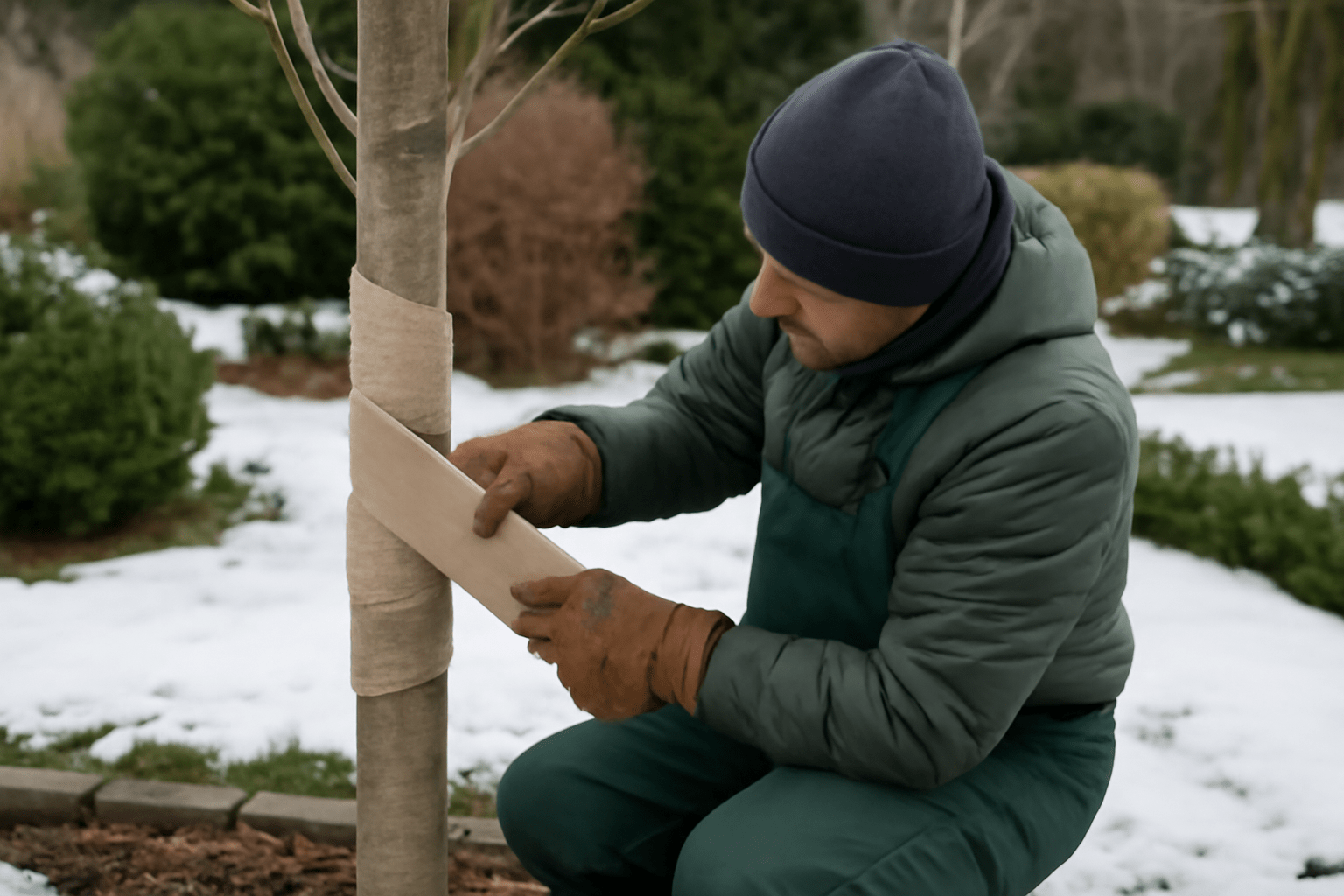
5. Ensure Proper Tree Health 
A healthy tree is more resilient to winter stresses. Consider feeding your beech tree with a balanced fertilizer in late autumn. This helps build strong cells that can better withstand freezing temperatures. However, avoid fertilizing too late in the season, as this can encourage new growth that is vulnerable to frost.
By taking these simple steps, you can make sure your beech tree is ready for the winter months. A little care now will keep your tree thriving when the cold hits!
This section provides practical and easy-to-follow steps that will help beech tree owners protect their trees before the harsh winter weather arrives. With clear and actionable tips, you’ll be ready to help your beech tree stay strong through the season.
Winterizing Your Beech Tree: Ongoing Care During Cold Weather 

As winter sets in, beech trees need extra attention to ensure they stay healthy and protected throughout the colder months. Here are practical and easy-to-follow tips to keep your tree thriving:
1. Watering Wisely 
Even in winter, your beech tree needs water. During dry spells, especially when the ground isn’t frozen, water your tree deeply. This ensures its roots stay hydrated and can absorb nutrients effectively. Just be sure not to overwater, as excessive moisture can cause root rot.
2. Mulch for Protection 
Apply a layer of mulch around the base of your tree. Mulching helps insulate the soil, keeping the roots warm and protecting them from sudden temperature changes. Use organic materials like bark chips or leaves, and spread it about 3-4 inches deep. Make sure to keep it a few inches away from the trunk to prevent moisture buildup, which can lead to rot.
3. Protect the Bark from Frost Cracks 
Beech trees are prone to frost cracks, which occur when the temperature swings rapidly between day and night. To prevent this, wrap the trunk with tree wrap or burlap, especially for younger trees. This provides insulation and helps maintain a stable temperature around the bark. Ensure the wrap is snug but not too tight.
4. Prune Carefully 
Winter is not the ideal time for heavy pruning, but you can still remove any dead or damaged branches. This prevents them from breaking off under the weight of snow or ice. Always use clean, sharp pruning shears and make cuts at a slight angle to avoid water collecting in the cuts.
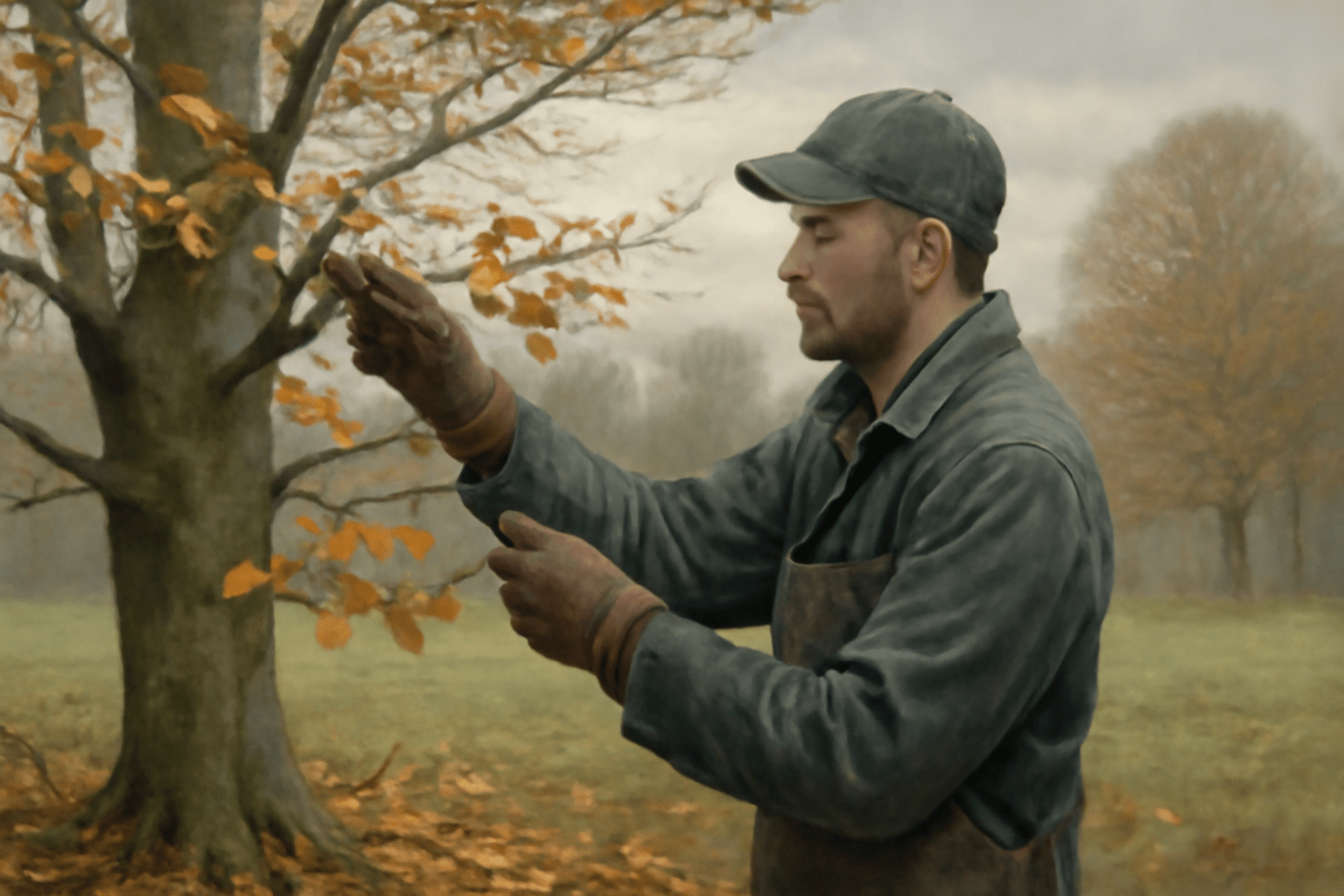
5. Shield from Snow and Ice 
While snow and ice can add a beautiful winter touch, they can also stress your beech tree. Consider installing a temporary barrier or snow fence around the tree to protect it from heavy snow accumulation and ice. This helps reduce the risk of broken branches and keeps the tree’s structure intact.
6. Monitor for Pests and Diseases 
Cold weather doesn’t mean pests are gone for good. Regularly check your tree for signs of pests like scale insects or fungal diseases. If you notice any problems, treat them early with appropriate organic pesticides or fungicides. Healthy trees are better equipped to handle the harsh winter conditions.
By following these simple steps, you’ll ensure your beech tree is well-prepared to handle the winter chill and come out strong and healthy in the spring 
Signs of Winter Stress and What to Do About It 
Winter can be a tough season for beech trees. Although these trees are hardy, they can still suffer from winter stress due to the cold weather and environmental factors. It’s important to recognize the signs early so you can take action to help your tree stay healthy throughout the colder months. Here’s how to spot the symptoms and what you can do to ease the stress on your beech tree.
1. Brown or Curling Leaves 
If you notice that your beech tree’s leaves are turning brown or curling, it’s a sign that it’s struggling with cold temperatures. This could be due to dehydration, windburn, or frostbite.
What to do:
- Ensure adequate watering before the winter sets in. Even though your tree may not need as much water in winter, a good deep watering before the cold helps the roots retain moisture.
- Apply a mulch layer around the base of the tree to conserve moisture and keep the roots insulated.
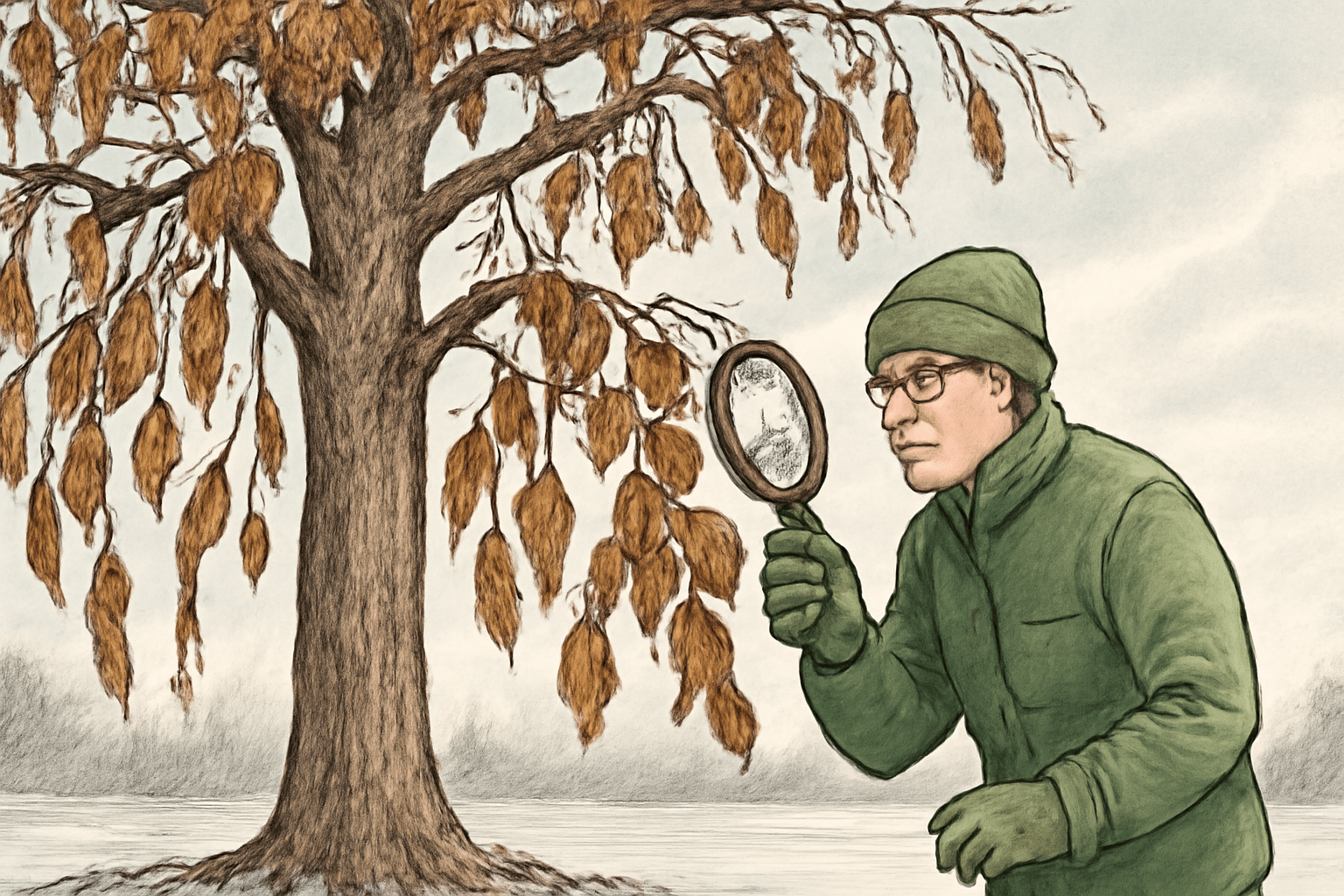
2. Cracked or Splitting Bark 
Beech trees are vulnerable to winter bark splitting when temperatures swing drastically. This happens because the outer bark contracts rapidly in the cold, while the inner bark remains warmer. This can create cracks that expose the tree to infection and pests.
What to do:
- Wrap your tree with a burlap or tree wrap to protect the bark from extreme cold.
- Prune any damaged areas once the weather warms to avoid further injury.
3. Wilting or Drooping Branches 
If you spot branches that seem to be drooping or wilting, it could mean your beech tree is stressed due to a lack of nutrients or moisture during the winter. This can lead to poor growth in the spring.
What to do:
- Check for water availability in the root zone. If it’s dry, give it a light watering.
- Fertilize in early spring to promote healthy growth after the winter stress.
4. Premature Leaf Drop 
Some leaf drop during winter is normal, but if you’re seeing excessive shedding, your tree may be struggling with the cold or lack of water.
What to do:
- Deep watering before winter arrives can help prevent dehydration and protect the tree from excessive leaf loss.
- Reduce the amount of pruning in fall to allow the tree to hold onto its leaves longer and prepare for the winter.
5. Stunted or Absent New Growth 
If your beech tree is slow to push out new leaves and shoots in spring, winter stress could be to blame. Prolonged cold can damage the buds, leading to delayed growth.
What to do:
- Feed your tree with a balanced fertilizer to support recovery.
- Prune any dead or damaged branches to allow the tree to focus its energy on new growth.
6. Discolored or Abnormal Spots on Leaves 
Winter stress can also lead to fungal infections, especially when there’s excess moisture combined with cold temperatures. Discolored or spotted leaves might be a sign of fungal disease.
What to do:
- Ensure good air circulation around your beech tree by pruning away crowded branches.
- Treat fungal infections with appropriate fungicides in early spring when the weather warms up.
By keeping an eye on these signs of winter stress, you’ll be able to give your beech tree the care it needs to thrive during the colder months. Taking action early can help ensure that your tree emerges from winter strong and ready to grow. 
Long-Term Winter Care for Beech Trees: Ensuring Healthy Growth in Spring 
Once the cold weather settles in, ensuring your beech tree’s long-term health requires a bit of extra attention. While winter can be harsh, proper care now sets the stage for a strong, vibrant spring growth 
1. Mulch for Protection 
A thick layer of mulch around the base of your tree provides essential insulation against freezing soil temperatures. Mulch helps retain moisture, preventing the roots from drying out, and shields them from fluctuating temperatures. Apply a 3-inch layer of organic mulch like bark chips or compost around the base, but avoid piling it directly against the trunk to prevent rot.
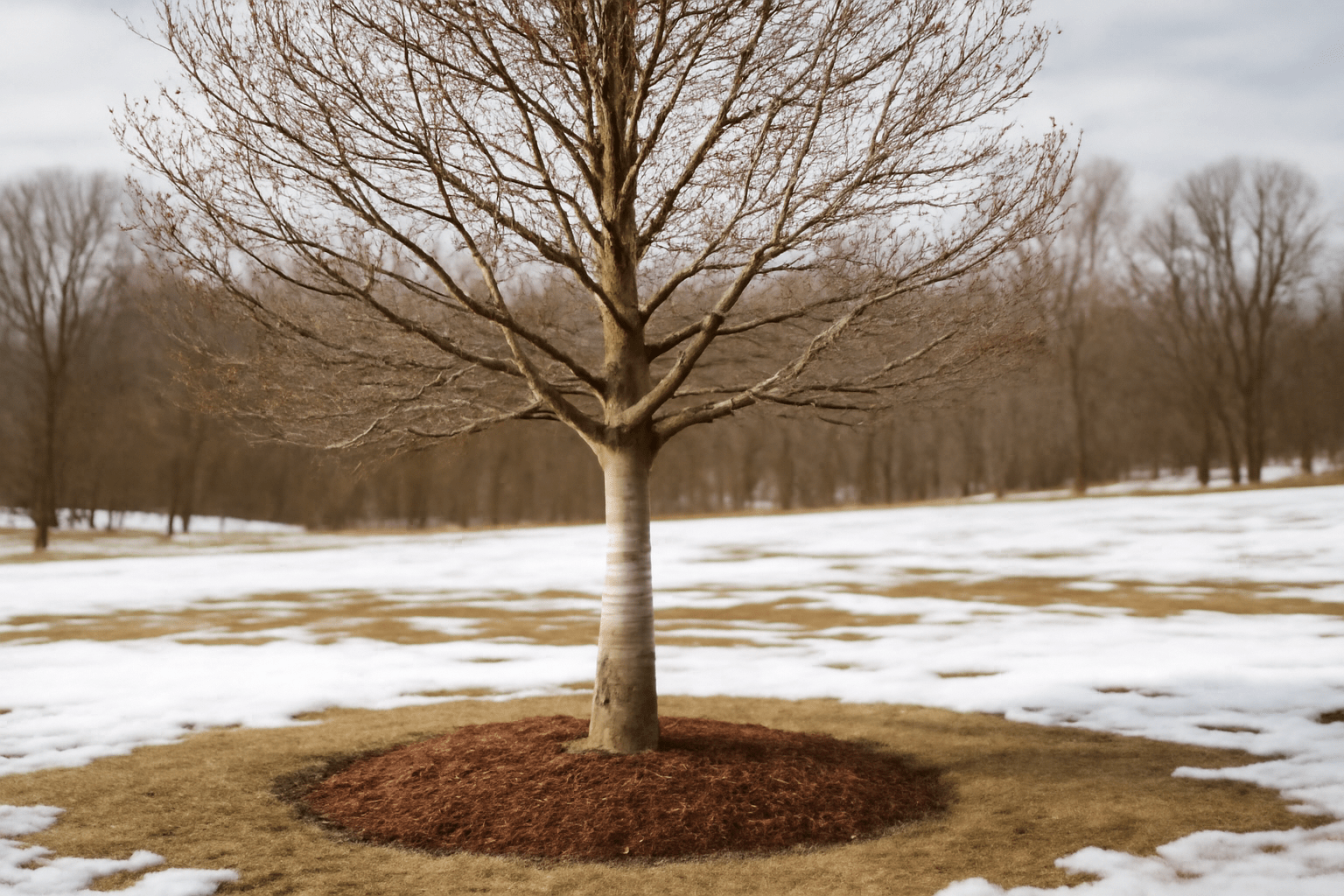
2. Watering Before Winter Sets In 
Before the ground freezes, make sure your beech tree is well-watered. Deep watering ensures the roots are hydrated and equipped to survive through the winter. Dry soil during winter can lead to dehydration, so a good soak in late fall can help keep your tree thriving during the colder months.
3. Protecting from Harsh Winds 
Beech trees are particularly sensitive to wind exposure during the winter. The strong winds can dry out leaves and bark, leaving the tree vulnerable to winter burn. Use burlap or tree wraps to shield your tree from harsh winds. Installing windbreaks around the tree or on the perimeter of your garden can help reduce exposure and minimize damage.
4. Pruning in Late Winter 
While you shouldn’t prune your beech tree during the fall, the late winter months are a good time for light pruning. Remove any dead or damaged branches, which can be more easily identified when the tree is dormant. Make sure to prune just before the buds begin to swell, preparing the tree for healthy spring growth.
5. Watch for Pests 
Winter doesn’t stop pests from invading your tree! Be on the lookout for insects that may have overwintered on the tree, especially around the trunk and branches. Regularly inspect your tree and take appropriate action if you notice any signs of pests or disease. If necessary, consult a professional arborist for treatments.
6. Avoid Over-Fertilizing 
It’s tempting to fertilize your beech tree during the winter, but it’s best to wait until early spring. Fertilizing during the winter can promote weak growth that may not withstand the cold. Instead, ensure your tree is strong by giving it a balanced feed when temperatures warm up.
By following these simple tips, you’ll help your beech tree endure the cold winter months and thrive come springtime 
Conclusion
Caring for your beech tree during the winter months is crucial for ensuring its health and vitality in the spring. While these trees are hardy, they still face challenges such as frost damage, desiccation, and physical harm from heavy snow or ice. By following the tips in this guide, from proper pruning and mulching to protecting your tree from winter winds and cold, you can give your beech tree the best chance of surviving the harshest conditions.
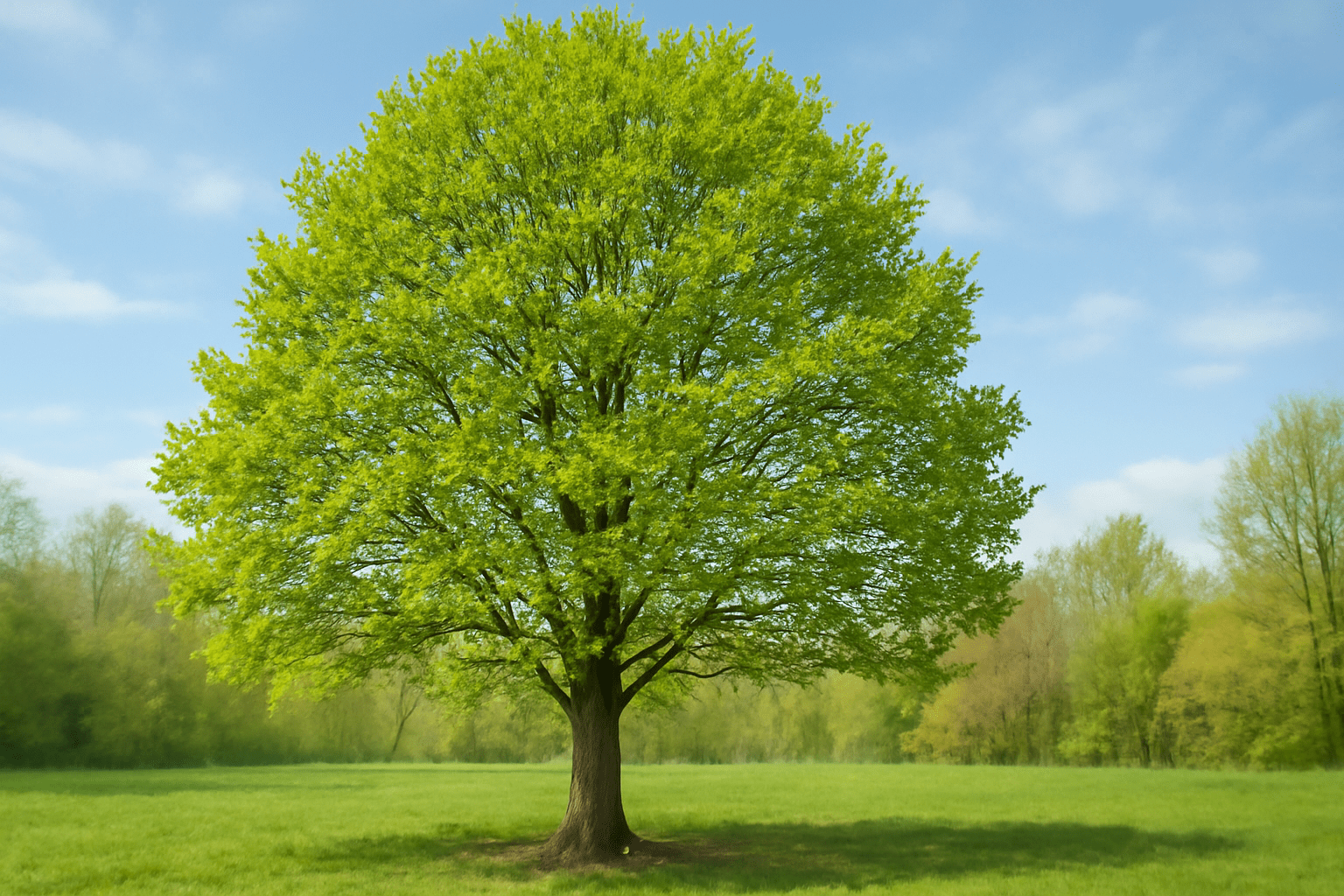
With careful attention and timely care, your beech tree will emerge from winter strong, healthy, and ready to thrive in the coming seasons. Start implementing these protective measures now, and enjoy a beautiful, resilient tree for years to come!
Frequently Asked Questions(FAQ)
How can I protect my beech tree from frost damage in winter?
To protect your beech tree from frost damage, wrap the trunk with burlap or frost protection fabric. Additionally, ensure the tree has good moisture in the soil before winter and use mulch around the base to help insulate the roots from freezing temperatures.
Should I water my beech tree during winter?
Yes, it’s important to water your beech tree before the ground freezes, especially during dry spells. Watering deeply ensures the roots are hydrated and helps the tree survive the winter months when water is less available.
When is the best time to prune my beech tree before winter?
Prune your beech tree in late fall, just before the first frost. Removing dead or damaged branches helps the tree withstand harsh winter conditions and prevents further damage from snow and ice accumulation.
How do I prevent my beech tree from drying out in winter?
To prevent drying out, apply mulch around the base of the tree to retain moisture. Additionally, wrapping the tree with burlap or using a windbreak can help reduce exposure to drying winter winds, which can dehydrate the tree.
Can I use anti-desiccant spray on my beech tree in winter?
Yes, applying an anti-desiccant spray can help protect your beech tree from winter desiccation by forming a protective layer on the leaves and branches, reducing moisture loss during cold, dry conditions.
How do I protect my young beech tree from winter damage?
Young beech trees are more vulnerable to winter damage. Wrap the trunk with protective burlap or use a tree guard to shield it from frost and winds. Also, make sure the tree is well-watered before the ground freezes, and apply a thick layer of mulch around the roots.
What should I do if my beech tree’s leaves are turning brown in winter?
Brown leaves in winter can indicate frost damage or dehydration. Ensure the tree is well-watered before freezing temperatures, and check for any signs of frost injury. If the damage is extensive, prune affected branches once the tree comes out of dormancy in spring.
Is it normal for my beech tree to lose all its leaves in winter?
Yes, beech trees are deciduous, so they naturally shed their leaves in winter. However, if the leaves turn brown prematurely or are damaged, it may be a sign of frost or winter stress. Ensure proper winter care to minimize damage and support the tree’s health.




